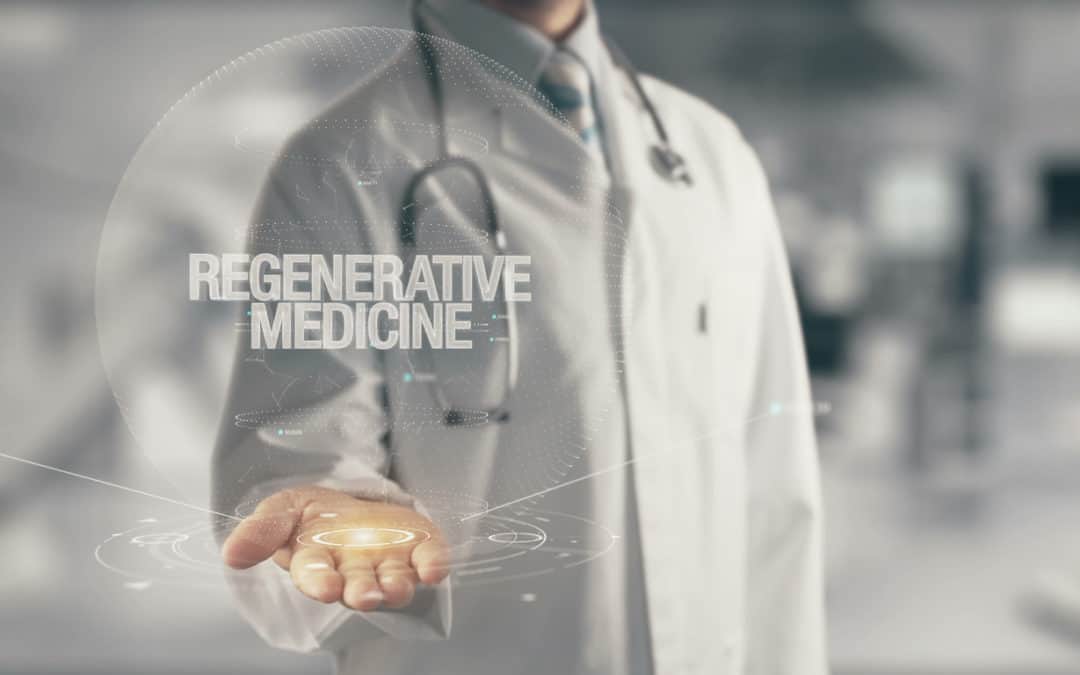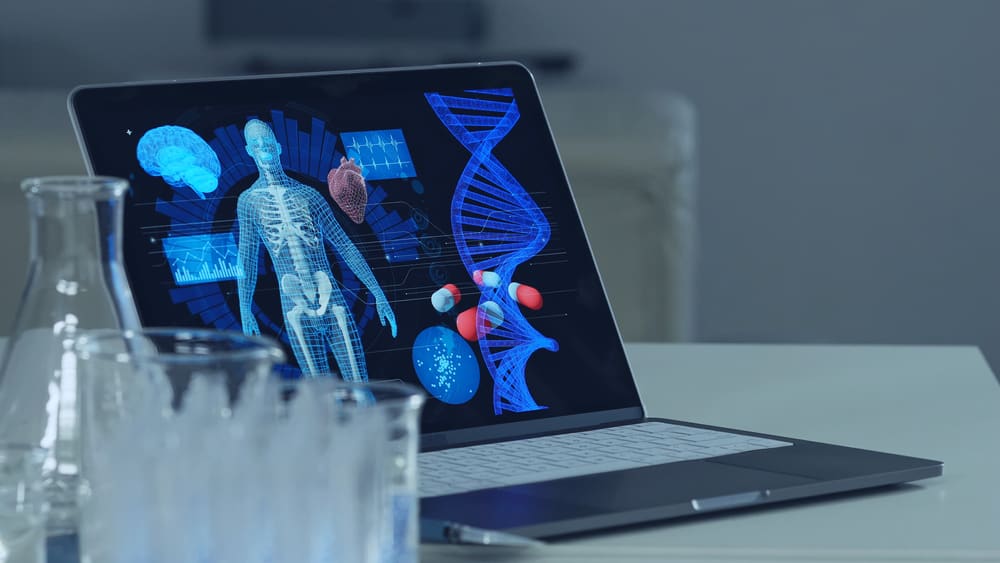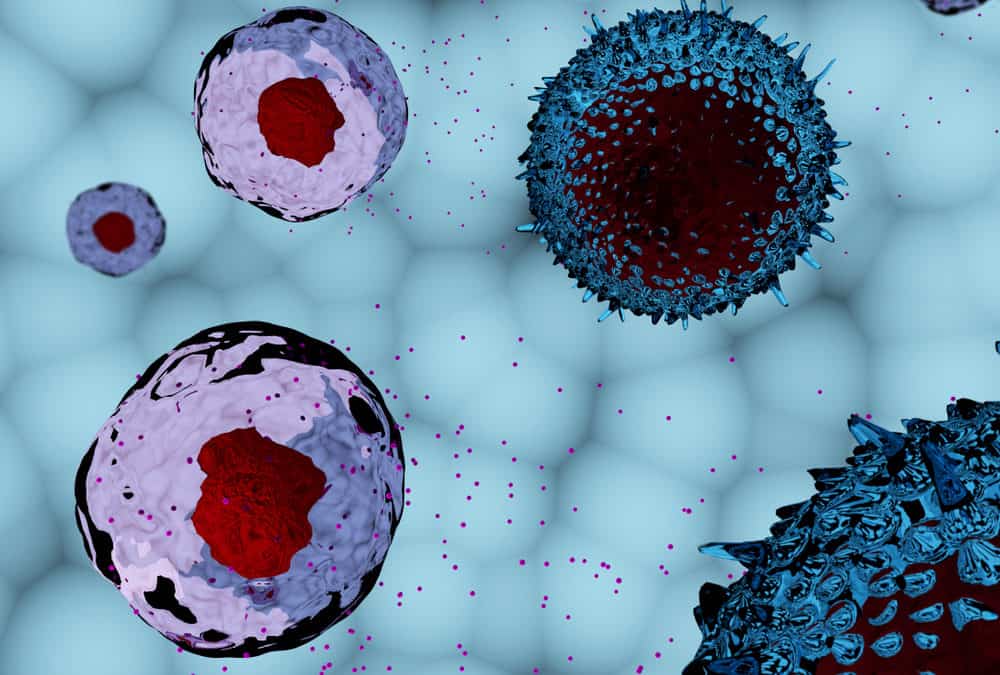
Feb 19, 2021
Regenerative medicine is a field in medicine that develops methods to regrow, repair, or replace damaged diseased cells, tissues or organs. It utilizes the body’s natural healing processes to rebuild damaged tissues and heal injuries. In the field of orthopedics, regenerative medicine holds great promise for helping patients with injuries or degeneration involving the musculoskeletal system.
Damage to the joints, ligaments, tendons, or discs can lead to chronic pain in various parts of the body including:
- Lower Back
- Knees
- Hips
- Neck
- Feet and ankles
- Hands and wrists
- Elbows and Shoulders
Regenerative medicine addresses the reason for the pain by helping to heal and create new healthy tissues.
How Does it Work?
Regenerative treatments for orthopedic conditions use the patient’s own blood and tissues from bone marrow or fat to kick-start the body’s own healing processes. These cells are removed from the patient and concentrated to isolate the healing proteins, molecules, and nutrients they contain. These super-healers are then re-injected into the site of damaged tissue to encourage new cell growth and healing.
The U.S. Food & Drug Administration (FDA) does not allow the use of embryonic cells or birth tissue products for treating orthopedic conditions. However regenerative medicine physicians can use FDA-compliant autologous cellular products to treat musculoskeletal problems.
These autologous cell therapies include:
- Platelet Rich Plasma: Platelets in the patient’s own blood release growth factors and proteins that promote tissue repair, while the plasma carries the hormones, electrolytes and nutrients required to nourish cells during the healing process.
- Cell Based Therapies: Adult Stem Cells taken from the patient’s own fat tissue (adipose) or bone marrow have the unique ability to develop into the specific kind of cell needed and possess molecules that direct other cells in the injured area to form new blood vessels, awaken other stem cells and encourage newly forming cells to produce collagen and other proteins essential for creating new healthy tissues.
Prolotherapy (Proliferative Therapy) is a Regenerative injection using natural medications, specifically dextrose, that help the body jump-start its own natural healing response when injected into the injured area.
Is Regenerative Medicine Painful?
For many years, patients with unresolved chronic orthopedic pain were left to consider surgery as their last option and best hope for long-term pain relief. But with advancements in regenerative medicine, these patients can avoid major surgery and lengthy rehabilitation.
Regenerative treatments are injection procedures and unlike surgery, they do not involve the pain or risk of large surgical incisions. Blood, bone marrow, or fat tissue is collected, processed, and injected into injured tissue on the same day. These procedures are typically performed on an out-patient basis and recovery begins at home within hours of the treatment.
Ask the Right Questions, Get the Best Results
When considering regenerative medicine treatments, it is important that you do your research in selecting a physician that is highly skilled and experienced in regenerative medicine. The following are questions that you need to ask before making your decision. Patients get the best outcomes when the answer is “yes” to all these questions.
- Is the physician board-certified and specializes in diagnosing and treating orthopedic conditions? Examples include Physical Medicine and Rehabilitation, Sports Medicine, Orthopedics, Pain Management physicians.
- Do you use appropriate, advanced, FDA-compliant devices in the preparation of the cellular products that can deliver the best results?
- Are the treatments performed using imaging guidance to ensure precise delivery of the regenerative products to the site of the injury?
- Is the practice compliant with FDA regulations?
- Do you track your outcomes and present them at medical conferences or publish them in medical journals?
Drs. Christopher J. Rogers and Mary A. Ambach of San Diego Orthobiologics Medical Group together have successfully treated thousands of patients with PRP and cell-based treatments for more than three decades. They are published authors and stem cell researchers. Their facility in Carlsbad contains the most advanced Regenerative Medicine technology in San Diego and offers same-day treatments with the highest level of safety and efficacy

Nov 27, 2020
Regenerative treatments use the body’s own unique healing properties to alleviate painful orthopedic conditions and address the underlying cause of the pain.
Regenerative medicine has the potential to repair or replace tissues damaged by age, disease or trauma. It can be used to treat a number of orthopedic conditions including the following:
- Bursitis
- Carpal Tunnel Syndrome
- Disc Degeneration and Tears
- Golfer’s Elbow and Tennis Elbow
- Herniated Discs
- Osteoarthritis of the knees, hips, back, shoulders and neck
- Plantar Fasciitis
- Tendon Tears and Tendinitis
How Do Regenerative Treatments Work?
The body is a finely tuned machine. Like any piece of machinery, it will send a signal when something is not working correctly. When a gasket fails on an engine and leaks oil, this leak is a signal that there is a problem. In the same way, when a body part fails, the body sends a signal to indicate there is a problem. Typically, it does this through the sensation of pain.
Regenerative treatments use the patient’s own cells in the form of platelet rich plasma or healing cells derived from fat tissue or bone marrow, to heal the underlying cause of the pain. These cellular products are referred to as Orthobiologics.
How Do Orthobiologics Work?
- Platelet Rich Plasma: Platelets in the patient’s own blood release growth factors and proteins that promote tissue repair, while the plasma carries the hormones, electrolytes and nutrients required to nourish cells during the healing process.
- Cell Based Therapies: Healing cells taken from the patient’s own fat tissue (adipose) or bone marrow contain adult stem cells that have the unique ability to develop into the specific kind of cell needed by the body. They possess molecules that direct other cells in the injured area to form new blood vessels, awaken more stem cells and encourage production of proteins and other materials essential for creating new healthy tissues.
- Prolotherapy (Proliferative Therapy): Natural medications that help the body jump-start its own natural healing response are injected into the injured area.
Minimally Invasive Pain Relief for Orthopedic Conditions
Orthobiologic regenerative treatments are performed on an out-patient basis and do not require hospitalization or lengthy rehabilitation. The healing cells are obtained from the patient through a needle or small cannula and are returned to the injured site on the same day.
Experienced, reputable practitioners of regenerative medicine follow the U.S Food and Drug Administration (FDA) guidelines for the performance of these procedures and follow strict protocols to ensure safety and efficacy. Patients considering regenerative treatments should seek the expertise of board certified-physicians who are specialized in diagnosing and treating orthopedic conditions. They have the regenerative medicine skills and experience necessary to promote safety, comfort and a successful outcome.
Drs. Christopher J. Rogers and Mary A. Ambach of San Diego Orthobiologics Medical Group together have successfully treated thousands of patients with cell-based therapies for more than three decades. They are board-certified in Physical Medicine and Rehabilitation. As published authors and stem cell researchers, they were chosen to participate in a first of its kind, FDA-approved clinical trial to treat knee osteoarthritis. The SDOMG facility in Carlsbad contains the most advanced Regenerative Medicine technology in San Diego and offers same day treatments with the highest level of safety, efficacy and patient satisfaction.

Oct 23, 2020
Regenerative medicine represents a complete breakthrough in modern medicine. The body’s ability to heal itself naturally is actually not a new thing. A fractured bone will regrow and heal the break. Cut yourself shaving, and the skin will heal. There are many examples of our body’s innate ability to heal injuries.
Now modern science and technology are now enabling physicians to help their patients discover new ways in which the body can heal itself. Within the specialty of orthopedics, regenerative medicine is offering healing and pain relief to patients who suffer from conditions such as osteoarthritis, herniated discs or ligaments and tendons injuries.
Orthobiologics Can Boost the Body’s Own Natural Healing Abilities
Orthobiologics are cells and substances derived from cells that are naturally found in your body. By concentrating them and delivering them to the site of injury, they can help speed up the healing process.
Here’s how it works:
When you injure a bone, muscle or tendon, the platelet cells in the blood are the first responders arriving on the scene to quickly start healing. White blood cells also rush to the injury site to ward off infection, control inflammation and become the clean-up crew [i]. Other important cells like stem cells participate in this complex symphony of repair. Specialists in orthopedic regenerative medicine can now boost these natural processes through several specialized treatments that help maximize the body’s own innate healing capabilities.
Regenerative Treatments for Orthopedic Conditions
There are different orthobiologic treatments that your regenerative medicine specialist can recommend depending on your orthopedic condition:
· Platelet Rich Plasma puts the healing properties of the patient’s own blood to work to repair damaged joints, tendons and muscles. The platelets in the blood release growth factors and proteins that promote tissue repair, while the plasma carries the hormones, electrolytes and nutrients required to nourish cells during the healing process. PRP treatments are customized to the particular individual and their injury in order to be most effective.
· Cell based therapies use cells derived from the patient’s own bone marrow or adipose (fat) tissue. These cells include adult stem cells and many other healing cells. They produce molecules that direct neighboring cells in the area to form new blood vessels, decrease inflammation and encourage formation of new healthy tissues. Stem cells are special cells that have the unique ability to develop into the specific kind of cell needed, whether that be a tendon, ligament, cartilage or bone cell. Skilled regenerative medicine practitioners use highly specialized processes to prepare these cells that are then delivered directly to the injured area to stimulate healing.
· Prolotherapy (Proliferative Therapy) uses dextrose and other natural substances that are injected into a chronically injured ligament, tendon, nerves or joint in order to help the body jump-start its own natural healing response.
Beware of Imposters
As regenerative treatments have become more widely recognized for their ability to address orthopedic conditions and the chronic pain associated with it, more and more clinics are trying to get in on the action.
If you are considering regenerative treatments for pain related to osteoarthritis, tennis elbow, degenerative discs in the spine or other conditions, you should perform due diligence on the clinic that offers it. The source, processing and delivery of the regenerative materials are critical to the success of the treatment.
Currently, the U.S. Food and Drug Administration (FDA) does not allow the use of stem cells derived from birth tissue products (amniotic fluid and tissue, umbilical cord blood) to treat orthopedic conditions because these donor products have not been proven to be safe or effective. Our board-certified specialists only use your own cells (autologous) to treat orthopedic conditions.
Maximizing the effectiveness of these treatments requires a state-of-the-art facility and equipment, as well as knowledge and experience in fluoroscopic (x-ray) or ultrasound guidance to ensure targeted delivery of the healing cells to the injured area.
Orthobiologic treatments that capitalize on the body’s own natural healing abilities is one of the most exciting opportunities in modern medicine to address and resolve the chronic pain associated with orthopedic conditions that affects millions of Americans.
Drs. Christopher J. Rogers and Mary A. Ambach of San Diego Orthobiologics Medical Group together have successfully treated thousands of patients with cell based therapies for more than three decades. They are published authors and cell therapy researchers. Their facility in Carlsbad contains the most advanced Regenerative Medicine technology in San Diego and offers same day treatments with the highest level of safety and efficacy.
[i] https://www.aarp.org/health/alternative-medicine/info-11-2008/super_healing.html
[ii] https://orthoinfo.aaos.org/en/treatment/helping-fractures-heal-orthobiologics/

Sep 25, 2020
What are Exosomes?
Exosomes are microscopic bubbles packed full of proteins and genetic material such as DNA and RNA. When released from cells they allow those cells to communicate with each other. The molecules and genetic material direct cell behavior such as cell growth or differentiation.
In the past decade, interest in exosomes has exploded for several reasons. First, they allow communication between cells and aid in tissue repair and regeneration. Second, they have been proposed to be useful vehicles for drugs and could be used as therapeutic agents. Third, they can be useful biomarkers of disease which aids in diagnoses and prognosis.
What is the difference between Exosomes and Stem Cells?
Stem cells are living things that have the ability to renew themselves and to turn into different kinds of cells. They contain thousands of molecules known to decrease inflammation, regenerate tissue and fight infection. Exosomes are substances secreted by all cells, including stem cells.
During the repair process, different kinds of cells or molecules are needed at the different stages of healing. The stem cells act like the conductor in an orchestra, directing cells where to go and what to do. They organize the complex symphony of cellular activity that leads to tissue healing. Different types of exosomes are produced by the stem cells and released at different times depending upon the needs of the body.
Can we use manufactured products that contain exosomes to treat orthopedic conditions?
There are currently no FDA approved exosome products. These products require FDA approval before they can be marketed for use in patients. Their safety and efficacy have not yet been proven. Although they have the potential to repair injuries and regenerate tissues, there is still much to be learned about their behavior in the body. Patients should avoid exosomes until research studies prove they are safe and effective.
Sources:
https://bmcbiol.biomedcentral.com/articles/10.1186/s12915-016-0268-z
https://www.fda.gov/vaccines-blood-biologics/consumers-biologics/consumer-alert-regenerative-medicine-products-including-stem-cells-and-exosomes
https://www.sciencedirect.com/science/article/abs/pii/S1931524418300070

Sep 18, 2020
The field of Regenerative Medicine is based on the principle that the human body can heal itself. Scientific discoveries in cellular biology, genetics and tissue engineering have been translated into treatments for previously untreatable conditions. The American Association of Blood Banks (AABB), an international association representing individuals and institutions involved in cellular treatments, describes regenerative medicine as “the process of replacing or regenerating human cells, tissues or organs to restore or establish normal function.”.
In the United States, Regenerative Medicine is a rapidly emerging field. Yet the foundations of this practice date back to ancient civilizations where human anatomy was studied and documented. Their findings were essential to the work of 18th and 19th century scientists who made huge breakthroughs in cellular biology. Cellular research completed in the 1700s and 1800s has lent a great deal to our understanding of how cells divide and proliferate. This knowledge continues to guide the advancements in the 21st century.[i]
Using cells to heal:
Since the first bone marrow cell transplant for the treatment of leukemia in 1968[ii], scientists and researchers have explored new ways to use Regenerative Medicine for the treatment of other medical conditions such as arthritis, disc degeneration and tendon injuries.
These regenerative treatments involve the use of a patient’s own cells to heal their injuries. Orthopedic medicine physicians treat injuries of the joint, ligament, tendon and bone. Platelet rich plasma (PRP) is the most commonly used orthopedic regenerative medicine treatment. PRP is produced by concentrating the platelets in a sample of a patient’s own blood. Platelets contain hundreds of growth factors that decrease inflammation and stimulate healing.
Another regenerative therapy is by using Cells that are derived from a patient’s own bone marrow and fat tissue. These Adult stem cells called Mesenchymal stem cells (MSCs) are found in these tissues and have the ability to develop into bone, tendon or cartilage cells and are important to support growth and development. In the body, they have been shown to stimulate cell growth, prevent cell death and inhibit pain or inflammation.
Prolotherapy is a form of regenerative therapy that does not involve the use of your own cells, but instead uses sugar water (dextrose) to stimulate a healing response in ligaments, tendons and joints.
These treatments do much more than simply relieve pain caused by conditions such as tendon injuries, disc degeneration or arthritis. They target the root cause of the pain and stimulate healing. This gives new hope for patients wishing to avoid medications or surgery for the treatment of their painful sports injuries and chronic degenerative conditions.
Orthopedic Conditions treated with Regenerative Medicine:
Regenerative therapies have been studied in a variety of orthopedic conditions including:
- Knee pain – arthritis and patellar tendon tears
- Hip pain – arthritis and gluteal or hamstring tendon injuries
- Shoulder pain – arthritis and rotator cuff tendon tears
- Low back pain – disc degeneration, facet joint and sacroiliac joint arthritis
- Neck pain – pinched nerves and facet joint arthritis
- Elbow pain – tennis elbow and golfer’s elbow
- Ankle and Foot pain – plantar fasciosis and arthritis
- Wrist and hand pain – carpal tunnel syndrome, tendon injuries and arthritis
Is it Safe?
Regenerative treatments use a patient’s own cells and can be performed safely, without the risk of disease transmission or immune reaction. Advanced equipment is used to concentrate the cells and cellular molecules in the blood, bone marrow or fat tissues. In the hands of a skilled physician, the use of ultrasound and digital x-ray image guidance permits the precise placement of the cells in the injury site, making the procedure safe, comfortable and effective. Dozens of published scientific articles have documented the safety of cell therapy with some tracking patients’ outcomes for more than 10 years.
However, there is a big difference between a board certified Regenerative Medicine specialist and “stem cell” clinics who merely sell umbilical cord blood, amniotic tissue or exosomes. The use of these donor birth tissue products are not permitted by the FDA because they have not been tested for safety or efficacy. They are typically sold by healthcare providers who do not have any Regenerative Medicine training and dozens of patients have been hospitalized with infections after the use of these contaminated products.
We recommend that you seek a board certified, fellowship trained physician who specializes in your medical condition and has extensive experience treating patients, conducting research and training other physicians. Ask your physician about his or her Regenerative Medicine training experience and their use of evidence-based therapies. These physicians conduct cell therapy research and track their patients’ outcomes in published regenerative medicine registries.
The work they are doing today will help shape the future of Regenerative Medicine, just as their predecessors did hundreds of years ago.
Drs. Christopher J. Rogers and Mary A. Ambach of San Diego Orthobiologics Medical Group together have successfully treated thousands of patients with cell based therapies for more than three decades. They are published authors and cell therapy researchers. Their facility in Carlsbad contains the most advanced Regenerative Medicine technology in San Diego and offers same day treatments with the highest level of safety and efficacy.
[i] https://www.unmc.edu/regenerativemed/about/whatis/history.html
[ii] https://www.sciencedirect.com/science/article/pii/S2213879X1500053X




